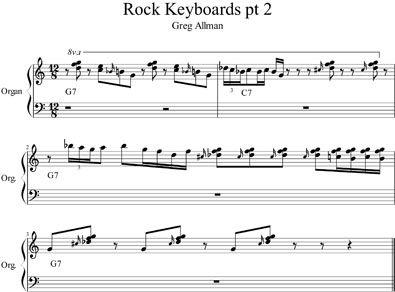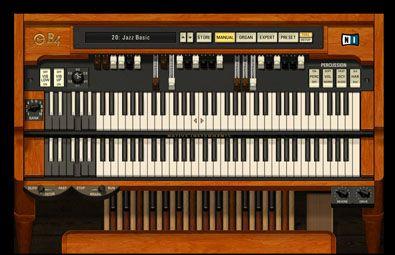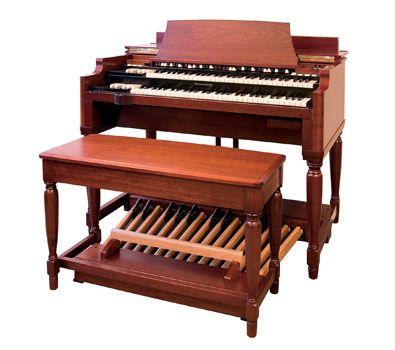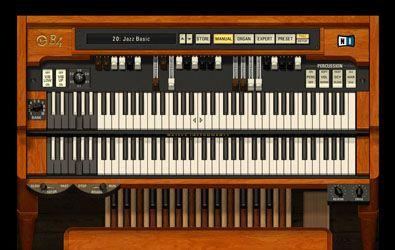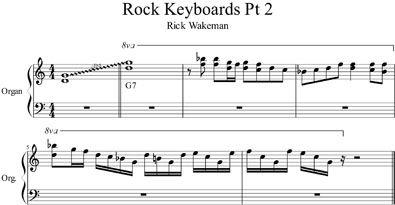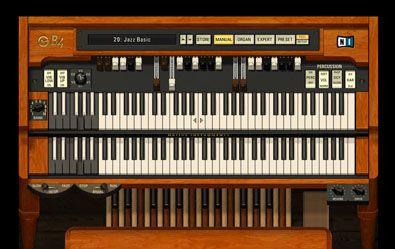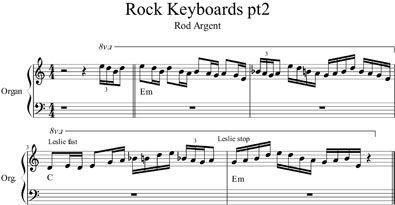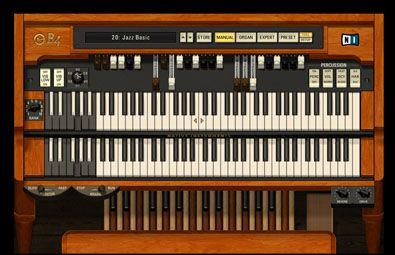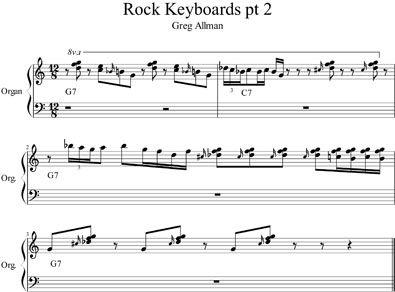Rock Organ III - workshop

Čtenáři, možná vás zaskočí, že na českých stránkách nacházíte anglický text. Není to chyba. V současné době pro časopis Muzikus píše newyorkský klávesista a pianista Brian Charette. A tak jsem si v redakci řekli, že bychom mohli něco udělat pro zlepšení vašich znalostí angličtiny. Určitě nám dáte za pravdu, že angličtina se na pódiích objevuje stále častěji a potřeba domluvit se na pódiu i v zákulisí se stane brzy samozřejmosti. Proto zde naleznete originální verzi přímo od Briana a na stránkách časopisu Muzikus v čísle 11/2013 článek přeložený Petrem Štikou. Navíc zde máte audio ukázky, které do časopisu jaksi přeložit neumíme. Enjoy reading!
šéfredaktor časopisu Muzikus Ing. Vladimír Švanda
Rock Organ 3
This month, I would like to continue with my first article on important Rock keyboardists. Our focus will be entirely on the Hammond Organ and it's use in Rock music in this installment. We can't include exact transcriptions because of copy write restrictions, so I've enclosed a few excercises to give you the flavor of each player. After you have mastered the examples, try transposing the music to 12 keys to really internalize the concepts.
Rick Wakeman
Hailing from West London, Rick Wakeman studied piano, clarinet, and orchestration at the Royal College of Music before becoming a popular studio musician. Rick worked with Black Sabbath, David Bowie, T Rex, and many others before joining the band that would make him a Rock Keyboard Star, Yes. Our first example is influenced by Rick's epic solo on Roundabout from the classic Yes album, Fragile. On your Hammond or Plugin (We will use Native Instruments B4) pull the first four drawbars out, add percussion/soft/fast/3rd harmonic, C3 vibrato, leslie on the slow chorale setting. Add a little overdrive on the sound too. Our plugin has a nice tube distortion simulator so we will use that. The example begins with a big glissando. Use your whole hand covering the white and black keys. The material mostly comes from the G blues scale. By hitting a few notes at once we get a powerful, almost distorted guitar like power chord sound. at the end of the example we arpeggiate G, C, and G7 chords.
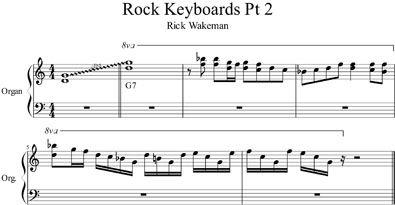
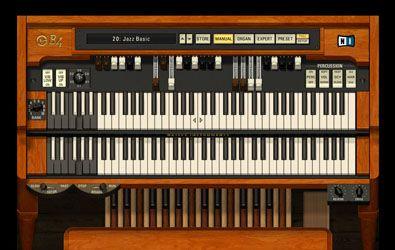
Rod Argent
Also from England, Rod Argent as a child sang in the St. Alban's Cathedral Choir before becoming a founding member of the 60's supergroup, The Zombies. Rod's playing on tunes like "She's Not There" and "Time of The Season" gave the group a very distinctive sound and made the tunes instant classics. Rod used a very unusual drawbar setting; The first 2 drawbars out perc on/normal/fast/2nd harmonic C3 vibrato, leslie switching between stop and fast. add a little reverb and overdrive. This example is very influenced by Rod's playing on "Time of the Season" The syncopated 16th note lines are constucted using the E minor blues scale which works beautifully over the whole chord progression of the song. Rod likes to create small motifs in the solo that ascend and descend but follow the same pattern. At points during the solo, switch the Leslie to fast for expression.
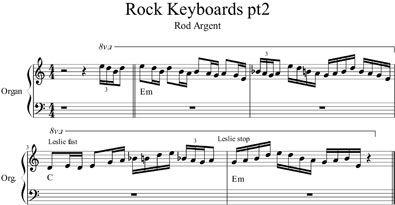
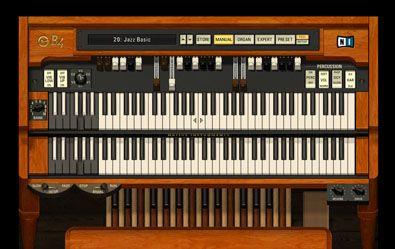
Gregg Allman
Gregg Allman is an American Rock and Blues singer, keyboardist, and guitarist, who is a founding member of The Allman Brothers. Gregg and his band helped formulate the Southern Rock sound of the Early 70's. In 1995 he was inducted into the Rock and Roll Hall of Fame and has been named in Rolling Stone magazine's "100 greatest singers of all time" list. Gregg is very influenced by Jimmy Smith and is fond of his drawbar setting; three drawbars out, perc on/soft/fast/3rd harmonic C3 vibrato, leslie slow. In this example, influenced by his playing on Stormy Monday, Gregg uses the G blues scale over a fairly common blues progression. See how he uses stabs and smears with grace notes to acheive a greasy bluesey texture. In bar 3 there is a short passage with notes taken from the G dorian mode (G A Bb C D E F G). Try combining the blues scale with the G dorian and mixolydian (G A B C D E F G) modes to add flavor to your own blues solos.
